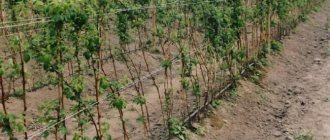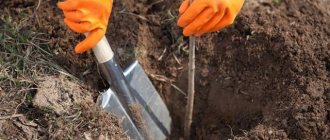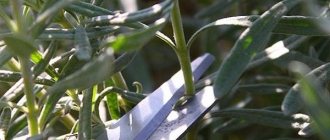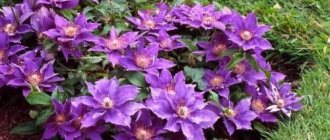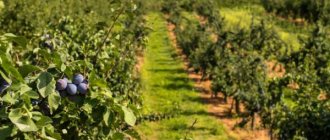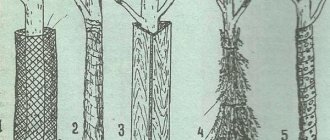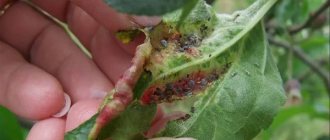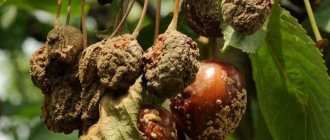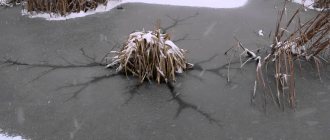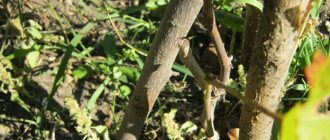The harvest in the garden largely depends on the condition of the bushes and trees in the spring, upon leaving wintering. Not only frost, cold wind, snow pressure on the crowns, bright winter sun, alternating thaws and frosts can cause local damage or death of the entire plant. Resistance to weather factors depends on the immunity of the tree or bush, the maturity of young shoots, the concentration of sugars and proteins in the cell sap - these indicators can be changed for the better by performing several care measures.
August: fertilizing fruit trees and shrubs
In August, feed trees and shrubs with fertilizers containing phosphorus and potassium. These elements help increase the winter hardiness of all parts of plants. You can use superphosphate, double superphosphate, potassium sulfate and apply the dose recommended on the package to the tree trunk. But trees are more responsive to foliar feeding (spraying foliage with a weak solution). It is better to use easily soluble fertilizers for them. There are very few of these containing phosphorus, and perhaps the best for this purpose is potassium monophosphate; it contains both components necessary for plants to prepare for winter.
fertilizing
The root system of fruit trees can withstand temperatures down to –16°C; In dwarf and semi-dwarf rootstocks, the frost resistance limit is several degrees higher. Under snow, the temperature does not drop to such values, but frosts without snow are very dangerous. Trees with roots damaged by frost do not die immediately.
In the spring they begin to bloom (although later and slower than healthy ones), they may even bloom, and die in the summer. Having discovered that the tree is lagging behind in development, you can still hope that the roots are not completely damaged. Watering and treating with stimulants that have root-restoring properties (Zircon, Kornevin, Heteroauxin, NV-101) will help bring it back to life.
Preparing trees for winter: orchard
Fruit trees in winter need some protection, because there are many factors that can destroy a garden in severe cold. Today we will talk about what measures should be taken to prepare the orchard for winter.
We already know some precautions that can protect trees from freezing and from spring insect attacks. We will mention some of them again, but we will also tell you how to properly prepare fruit trees for winter.
Preparing trees for winter: fertilizing
Feeding trees before the cold season is an important part of preparing the garden for winter. Fertilizing with phosphorus and potassium will help strengthen all parts of the tree and increase their winter hardiness, which is very important for young trees and seedlings of the current year.
For this process, you can use superphosphate and potassium sulfate. Fertilizers are applied to the soil strictly according to the instructions on the fertilizer packaging, into the trunk circles of each tree. But at the end of summer and beginning of autumn, fruit trees react most positively to foliar feeding in the form of spraying the crown. To do this, you can use potassium monophosphate - a complex fertilizer that contains the necessary components to strengthen the tree and prepare it for the cold period.
In the autumn, it is imperative to organize fertilizer for the garden.
You need to know that the root system of garden trees can withstand temperatures down to -15-16°C, while dwarf trees in the garden have a limit that is 2-3 degrees higher. Naturally, such temperatures practically never occur under a layer of snow, but if the garden experiences a frosty winter without snow, then serious troubles are possible.
If the root system of a fruit tree is damaged by frost, this does not mean that the tree will die immediately. It may bloom with the first warmth and even bloom, but the lag in development will be seriously noticeable. Usually, trees die in the summer.
In this case, if you notice a delay in development, injuries to the tree, or its illness in time, you should quickly help the plant to save itself, otherwise it can be lost forever. Special stimulants that must be used during watering will help restore life and health to the tree trunk. These are Kornevin, Heteroauxin and Zircon - preparations for restoring the root system.
Fertilizing an orchard is an important stage in its preparation for winter.
Cleaning the orchard, cleaning and whitewashing trees
We prefer not to repeat ourselves here, since detailed material on this topic is already available. You can read about how to clean and whiten trees in the fall and, having applied the knowledge gained in the garden, move on to the next measures to protect the orchard and prepare it for wintering.
Don’t forget about cleaning and whitewashing trees before the winter cold
Hardening off trees, mulching the soil
The process of hardening the root system of trees is very important, since many trees in winter can be lost from frost, especially if the winter was severe but snowless.
Hardening is carried out using a very simple method that even an inexperienced summer resident can do. You just need to remove a layer of soil near the tree trunk, no more than 3-5 cm, and store it in a dry and cool (but frost-free) place until the first frost. In this case, it is important to harden the bare roots of the tree with cold, but not to miss severe frosts, otherwise you may cause harm. With the onset of the first frosts, the earth returns to its place.
Hardening off an orchard before wintering
Thanks to this process, the root system will gradually get used to extreme cold and will react to it more neutrally, freely surviving even winters without snow.
Hardening must be carried out if you want to protect apple and pear trees from winter cold. Other types of fruit trees do not react so strongly to frost.
Preparing the garden for winter is also done by mulching stone fruit or apple trees, which are grafted onto a semi-dwarf rootstock. Mulching the soil is carried out with any dry bulk material that is available at the dacha. It would be most appropriate to carry out mulching closer to mid-to-late November.
Mulching the soil in the garden in autumn
Autumn watering of trees
Charging with moisture must be carried out by mid-October; this is also a special preparation of trees for winter.
It is necessary to water the orchard abundantly during leaf fall, since the root system consumes water and is recharged before the onset of the first frost and freezing of the upper layers of the soil.
How to organize proper autumn watering of an orchard?
If the autumn turns out to be rainy, there is no need to carry out such watering, but if the weather is dry and more or less warm, try to thoroughly moisten the soil in the tree trunk circles, and preferably around the entire crown. It is necessary to water the trees abundantly so that the soil over the specified area is moistened to a depth of 30-40 cm.
The approximate amount of water for a young tree is about 40-60 liters, for an adult tree the amount of water can reach 150-200 liters.
It is necessary to moisten the soil in the tree trunk circles and under the entire crown, because it is in these places that the youngest roots are located. It is advisable to water the tree in several approaches so that the soil is well saturated with moisture. You can arrange batch watering for 2-3 days. To make your task easier, you can build a small ditch and make an earthen rampart. The diameter of such a structure for young trees is 60-70 cm, for adults – up to 2 m.
Autumn watering of the garden to recharge trees with moisture: rules, features, norms
It is advisable to water in batches; the water should saturate the soil well; the water should not flow down the tree trunk.
Protecting your garden from rodents
Preparing fruit trees for winter includes one more stage - protection from rodents, which can seriously damage young trees in winter.
This process is very simple, but it will take some time, because everything depends only on the number of trees in the garden.
Protecting the garden from rodents can be done in the simplest way - by wrapping a tree trunk with old tights, spruce branches or craft paper. If you have the opportunity to spend a little money to better protect fruit trees from rodents, we recommend that you tie deciduous trees (orchard trees) for the winter with roofing felt, roofing felt, reed mats or special plastic gratings, which qualitatively limit the access of rodents to fruit trees.
How to protect your orchard from severe cold and hungry rodents in winter
It is imperative to remove the winding of the trunks with the first heat, so that the bark of the trees does not prop up and develop unpleasant diseases.
Spraying trees for the winter
This is rather a preventative measure, but it must be applied, even if the tree is not sick. Spraying against fungal infections will help the tree not to get the disease on the warm days of autumn or winter, as well as with the first warmth of spring, when this becomes very possible.
It is advisable to spray after leaf fall, so that the maximum of the special solution reaches the trunk and branches, and does not burn the leaves or poison the fruits before harvesting. Trees are treated for the winter with copper sulfate (5%, 300 g of sulfate per bucket of water). It would be most correct to dilute the vitriol in a liter or two of hot water, and only then mix it with the rest of the volume, since the drug does not dissolve very well in cold water.
Preparing an orchard for winter: autumn spraying with special compounds
Spraying of fruit trees for the winter is carried out before protecting them from rodents and whitewashing the trunks.
How to cover trees for the winter?
Many shrubs and trees do not feel very good in winter, especially when the winter is snowless and the ground, along with plant roots, is seriously frozen. This fact can lead to plant diseases or even their death, and therefore some varieties and types of garden plants need to be properly covered.
How to properly cover garden plants for the winter?
Sheltering trees for the winter is done in very different ways - tree trunk circles are trampled down with snow, trees are wrapped in spruce branches, and covered with special shields. This topic is generally considered difficult, since we would not recommend using the same shelter for different plants. True, they say that garden shields, which you can make with your own hands from wooden planks and roofing felt, do an excellent job with this task. They are installed around young trees and cover them from above. As a result, you get wood in a dry and more or less warm, closed space. There is an opinion that trees do not even need to be whitewashed for shields.
We cover the orchard and protect it from winter frosts
To protect trees under shields from rodents, you can place special “vases” with tar around the garden, which many rodents simply cannot tolerate. It is advisable to add poisons or repellents, since rodents slip under the shields much easier than getting to the bark of wrapped trees.
The life of trees in winter can become much easier if you provide your orchard with certain care for the winter. Prepare your garden for winter and you won't recognize it in spring. Believe me, the next harvest will be more successful, and all the trees that could get sick or die will survive and will definitely complement it.
September: peeling
Clear the trunks of old bark and lichens. This is needed by trees older than 6–8 years, whose upper layers of bark begin to peel off and die. This is a natural process for any tree, and you should not be afraid of it. You can clean the bark with metal brushes and a tool for removing grass between the slabs (its sharp corner is convenient for working in hard-to-reach places).
Work carefully, removing only the outer layers of brown and black. The living bark has a delicate light green tint. At the same time, remove the lichens. By themselves, they do not cause harm to the tree, but serve as a shelter for pests and pathogens.
To get rid of lichen, you can spray the trunks with iron sulfate. As the lichen dries out, it will turn brown, but you will still have to remove it from the surface of the bark manually. Treatment with vitriol is best done in late October - early November, as the solution can damage green leaves.
Scheduled cleaning
| A clever device for collecting fallen fruits. A drum with flexible plastic rods lets the fruits in, which are then poured out through a side hole. Also, using the side grip, you can collect fruits lying close to the tree trunk. |
Do not delay with general garden cleaning and harvesting. Often, gardeners remove only good fruits, and leave carrion and dried fruits to rot on the branches. Decaying organic matter is a potential site
| If there are tall trees on the site, the fruit picker allows you to pick apples without the help of a ladder |
for the development of fungal infections, therefore all rotten fruits must be removed from the branches, and the carrion must be collected. If they are affected by diseases, then it is better to get rid of them. Healthy, but unsuitable for food fruits are sent to the compost heap.
With the arrival of cold weather, trees begin to shed their leaves; you should not allow the leaves to lie near the trunks for a long time, otherwise pathogenic bacteria will multiply in them. Leaves can be useful raw materials for composting.
September-November: Hardening and mulching
If you have young apple trees of valuable varieties, grafted onto a vigorous seed rootstock, and pear trees, you can harden the root system - this will increase their resistance in the event of snowless frosts. In September, rake the soil from the tree trunk to a depth of 3–5 cm, exposing the upper part of the large roots. Collect the removed soil and store it in a frost-free room in a dried form. With the onset of light frosts, return the soil to its place.
Thanks to hardening, the roots will gradually get used to low temperatures and will more successfully survive the dangerous period before snow falls. The root system of apple trees grafted onto a semi-dwarf rootstock, as well as stone fruit trees, will be protected from frost by mulching the soil with dry bulk materials. It is held in November.
Preparation of bushes
In shrubs, as in trees, all diseased or unnecessary branches should be cut off before the onset of cold weather. Do not forget to treat the cut areas with garden varnish. Then it is necessary to mulch and fertilize the soil around all garden shrubs. If the buds of a shrub may freeze over the winter (as happens with a rose), you need to cover it with compost, soil or humus. Bushes are also insulated with screens made of non-woven or polymer material; heat-loving plants should be additionally bent to the ground.
October: Moisture-recharging irrigation (beginning - middle)
Water your garden thoroughly during leaf fall. The root system consumes moisture until the soil freezes. If the autumn is rainy, there is no need for watering, but when there is little rainfall and the ground does not freeze for a long time, the plants may suffer. Watering doses depend on the age of the plant: the soil at a depth of 40 cm (for trees) and 20–30 cm (for shrubs) along the entire projection of the crown should be moist.
The approximate volume of water is 40–50 liters per tree for 4–6 years. Watering can be done at one time, watering each plant in portions and waiting until the water is absorbed into the soil, but it is better to spread it out over several days.
Water not only the area near the trunk (by the way, water should not flow down the trunk), but also the entire area under the tree’s crown: the most active suction roots are located just along its periphery. To prevent water from spreading, build an earthen roller encircling the trunk circle with a radius of 70 cm (for trees up to 5 years old) and 1.5–2 m (older).
Autumn pruning
Most often, garden shrubs and trees are pruned in spring and autumn. In the spring, this surgical operation is performed before sap flow begins. During this period, injuries caused to the plant heal the fastest. At the same time, there is a great danger of not being in time and missing the time for pruning; in this case, this procedure is carried out in the fall. For some types of fruit and berry flora, autumn is a more favorable time for pruning than spring.
- Grapes (fruit vines) – many summer residents and gardeners have long been growing this heat-loving plant in the middle zone. It is important to follow certain pruning rules. Grapes need only autumn pruning, since the plant is characterized by very early intense sap flow.
The easiest way to prune grapes depending on the age of the plant When pruning in spring, the vine will lose excessive amounts of moisture, which will affect subsequent harvests. The vine produces a large number of shoots and grows strongly, as a result of which the fruits will become smaller, so pruning is required to obtain a good harvest.
At the beginning of October, the grapes are harvested; after the leaves fall, the vines are removed from the trellis. Pruning is done at a temperature no higher than – 3 degrees. Weak fruit-bearing shoots are cut off and the remaining foliage is removed.
Pruning grapes not only helps the fruits ripen better, but also provides better shelter for the winter. Depending on the age of the plant, different numbers of shoots are removed. The first year, the shoots are tied vertically and the mature vine is pruned; in the second year, pruning is done into two buds; in the third and fourth years, pruning is done into four buds.
- Black currant bears fruit on the shoots of previous years; branches 4-5 years old have the largest number of berries. Older branches are removed, and the cut is made near the ground, leaving no stumps. The currant bush should have 1 - 2 branches of each age.
Scheme for pruning old branches of black currant
If the currant bush has not been pruned for a long time, then you should not cut off all the old branches in one year, this may upset the balance between the root system and shoots. The branches of black and white currants have a longer fruiting period - they are pruned only after the ninth year. The principle of pruning them is similar to black currants - 1 - 2 branches of all ages should remain on the bush.
- Gooseberries grow rapidly by producing zero shoots growing from the roots. All diseased, non-fruiting shoots must be thinned out, leaving 5 - 6 of the strongest ones. Young shoots create shade for the lower branches. An adult bush should have 15–20 shoots of different ages no older than 5 years. The shoots should be cut 10 cm above a healthy bud. Weak branches that do not bear fruit are cut off to the point of branching.
- Roses – ornamental plants also need pruning. During the summer, buds are cut off from rose bushes to encourage further flowering. By winter, rose shoots should ripen, so they stop pruning in August. Pruning is carried out before covering the bush for the winter, when all the foliage falls off. Leftovers
Scheme for pruning neglected gooseberries leaves are removed, and damaged shoots are also removed. In order for the bush to fit under the shelter, old woody shoots are pruned; you should not seriously injure the bush, since in the spring you will still have to carry out formative pruning.
To trim bushes, a sharp pruner is used; woody branches are easier to cut with a design with an anvil, where the upper blade is sharpened and the lower one serves as a stop. To ensure that the instrument continues to serve the next year, do not forget about maintenance. Plant residues, resin and juice must be removed with soapy water; stubborn stains must be wiped with a solvent. It is better to store the pruning shears in a dry room in the open position so that the spring does not lose its compression force. Before storing the tool, it is necessary to lubricate the blade; to do this, drop oil into the groove on the support blade, then close and open the blades several times. You can also treat steel surfaces with a moisture-replacing spray.
- Fruit Tree Pruning – Apple and pear tree pruning is best done in the spring, but emergency pruning may be required in the fall. When harvesting, you should pay attention to long branches that may be damaged by wind or snow. If the branch has already broken, then you should not leave the tree in this state until spring. In autumn, you cannot cut a branch into a ring. To prevent the cut from becoming a “conductor” of cold, the cut is made on a spike, i.e. leaves a stump of 10 - 15 cm and smears it with garden varnish. The work is completed in the spring. You should not postpone pruning if diseases develop on the tree. Affected branches must be removed and burned.
To trim fruit trees you will need sharp garden tools. The cut must be clean. Make sure that the bark does not lift up and the wood does not crack. For thick branches, use a lopper, power saw, or hand-held pruning saw.
October: Protection from rodents
Take care of protection from rodents. To do this, tie the trunks (the section of the trunk from the ground to the first large branch) with spruce branches (needles down) or craft paper, glassine, reed mats, bamboo mats, roofing felt, roofing felt, construction bandages. Or even old tights. It is important to remove the protection in time in the spring, otherwise the bark under it may become supported. It is best to use special plastic meshes - they allow air to pass freely.
How to cover young trees for the winter
Not all trees, even young ones, need shelter for the winter. For example, zoned varieties of apple and plum trees winter well. However, for annual seedlings that have just recently appeared on your site, it is better to cover them in the first winter.
The shelter will help protect the garden from many problems: rodents, drying out of the bark, bright sun, etc. How to properly cover trees for the winter?
Sheltering begins only after the air temperature remains stably below –5°C. Covering it too early can lead to damping off of the bark and awakening of the buds.
One of the best materials used to cover young trees for the winter are spruce or juniper branches. They are tied around the trunk with the needles down, slightly buried in the ground. Such a shelter is the best protection for the trunk from rodents.
However, it is quite difficult to find a spruce forest on the site (unless you have done pruning of conifers in the fall), so more often what is at hand is used.
Almost any material is suitable for shelter:
- covering non-woven material: spunbond, lutrasil, etc.;
- sackcloth;
- bags and nets for storing vegetables;
- soft construction mesh;
- old clothes and generally any unnecessary fabric;
- tights;
- gauze, bandage;
- roofing felt, roofing felt, linoleum;
- foam rubber, laminate backing, etc.
When using non-breathable materials, for example, roofing felt or linoleum, first wrap the trunk with some kind of fabric (burlap, matting, etc.).
Late October - early November: Eradication spraying
Be sure to carry out autumn spraying against fungal infections, even if there are no signs of disease. This is a very effective and environmentally friendly measure: after leaf fall, you can use high concentration disinfecting solutions without fear that they will burn the leaves or get into the fruit. The treatment is carried out with copper sulfate (3–5% solution – 300–500 g of copper sulfate per 10 liters of water). Copper sulfate does not dissolve very well, so it is best to dilute it in a small volume of hot water, and then increase the volume of the solution to the required volume. Spray before whitewashing and installing plant protection against rodents.
In the beginning of November
During this period, it is necessary to additionally spray against diseases and pests. The measure is more of a preventive measure, but it certainly won’t be superfluous. You need to spray the entire crown and trunk. A solution of copper sulfate (0.3-0.5 kg of substance per 10 liters of water) is excellent for these purposes. But keep in mind that it does not dissolve well in water. Therefore, it is better to first dilute the product in hot water and only then pour this solution into a full bucket of water.
Important: spray only after all the foliage has disappeared. Otherwise you risk burning the tree.
This treatment of trees allows you to protect them from a sudden invasion of bacteria and pests with the onset of heat.
November, February-March: Whitewashing
The bright spring sun and especially the rays reflected from the snow cause sunburn in young plants. They cause the greatest damage to trees aged from 5 to 10–12 years. To protect against burns and frost damage, garden whitewash is used, which is applied to the trunk and bases of skeletal branches twice: in November and February-March. You can use special latex-based paint for trees - it is not washed off by autumn rains. Apply whitewash or paint only to dry bark and not during rainy periods.
autumn whitewashing of trees
Weather influence
It is worth knowing how climatic factors affect the life of plants:
- If the thermometer drops below minus 35 degrees Celsius, absolutely all garden plants need protection from frost;
- Particularly dangerous for trees and shrubs are early frosts that occur before a stable snow cover has formed, as well as freezing rain;
- If the summer was rainy and not hot (as in 2021), then we should expect a long growing season that will not end until cold weather sets in. This is due to the fact that the soil in the Kazan region is highly nutritious, and when saturated with moisture, it becomes even more favorable for plants. Extended growing season threatens shoots freezing.
- Autumn is also dangerous for plants, with sharp temperature fluctuations - from frosts below zero to warm, summer-like days.
Therefore, if you do not live outside the city all year round, but leave the site in the fall, you should hurry up with preparing the plants for winter.
